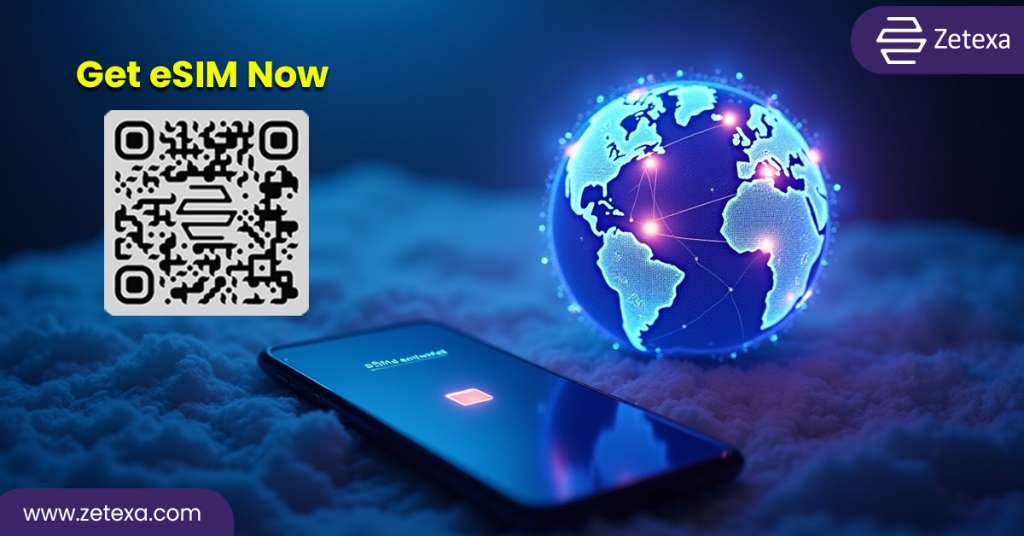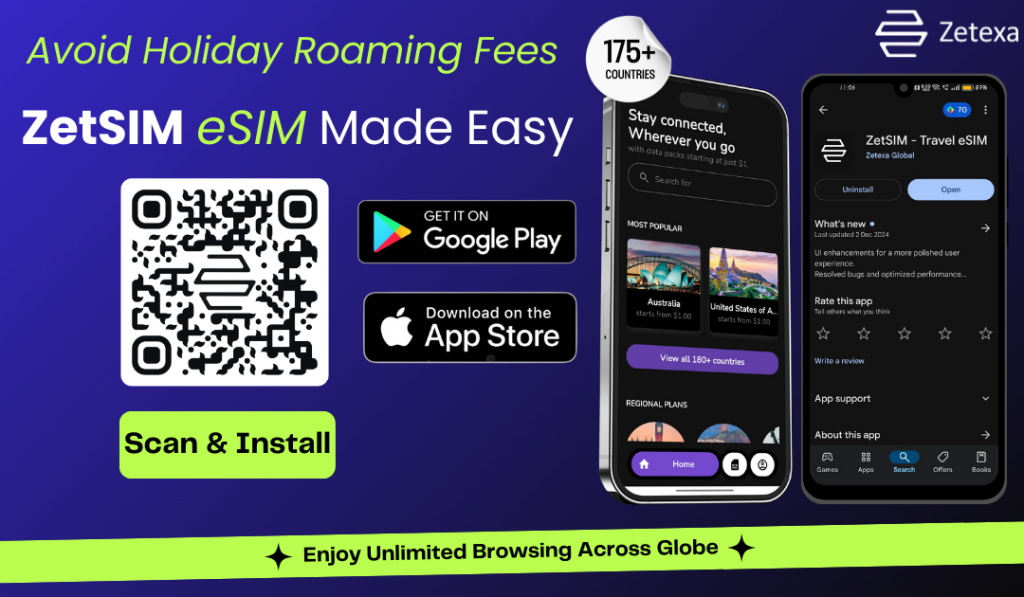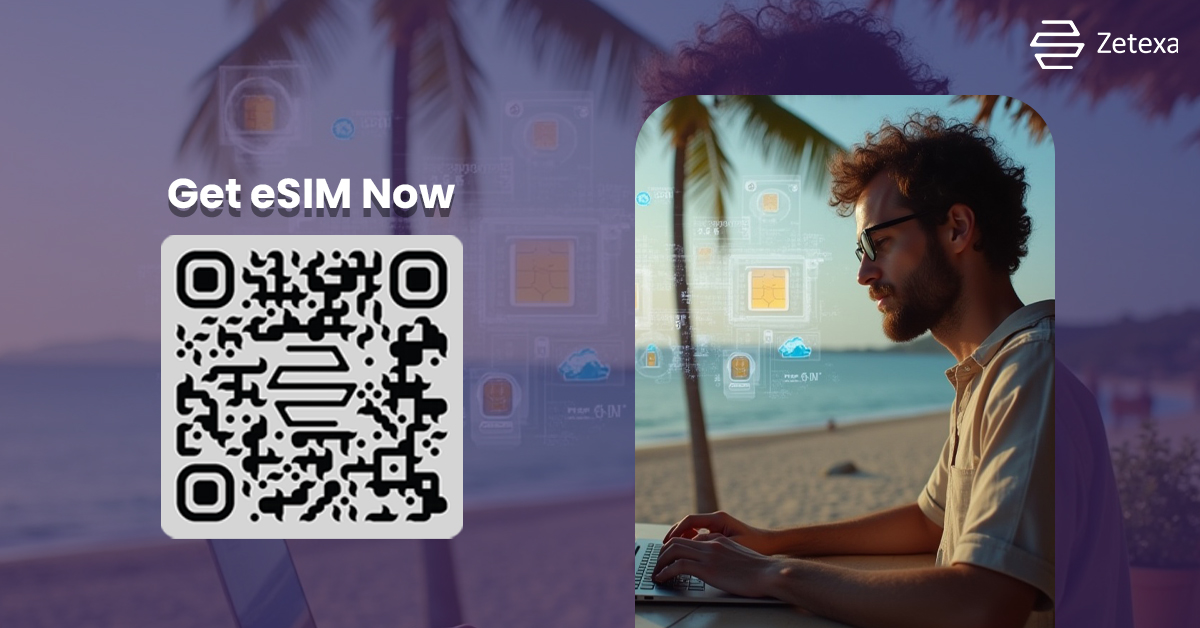The telecom industry is undergoing an enormous transformation. With an increase in the use of eSIM technology and the requirement for mobile flexibility, Mobile Virtual Network Operators (MVNOs) are particularly positioned to reap an enormous part of the market. With partnerships with eSIM vendors, MVNOs can enhance service delivery, streamline business operations, and expand their global presence without being tied to physical assets. For those contemplating telecommunications as a prospective new source of revenue or looking to develop an existing one, an understanding of the dynamics of the relationship between eSIM and MVNOs is essential.
This in-depth article discusses the eSIM and MVNO relationship, how MVNOs work, provides choice recommendations for the best partner, and presents Zetexa, known to be the top MVNO for eSIM services in 2025. As a digital business proprietor or app creator, or international reseller, this article will assist you in utilizing cost-effective eSIM MVNO plans and optimizing MVNO eSIM plans.
What is eSIM?
An eSIM, or an Embedded Subscriber Identity Module, is a chip inside a mobile device that can be programmed with a carrier’s credentials and doesn’t need a physical SIM card. A physical SIM card, which you have to put into the device, is not the same as an eSIM that can be activated and set up over the air via a QR code or through a mobile app.
Key Characteristics of eSIM:
- Remote Activation: Customers are able to remotely activate their cell plans at any location worldwide without having to wait for a physical card.
- Diverse Profiles: One eSIM can hold several carrier profiles, and it supports easy switching among plans or carriers.
- Convenience: Particularly precious to users like travellers, remote workers, and international citizens who need instant access to local data plans.
- Compatibility: Compatible with a vast range of devices, such as smartphones, tablets, smartwatches, and laptops.
- Sustainable: Reduces plastic waste by removing the need for physical cards.
- Security & Scalability: With provisioning encryption and over-the-air updates, eSIM is both secure and scalable for B2B and IoT use cases.
In addition to its end-user benefits, eSIM technology also allows service providers to provide richer customer experiences through more efficient onboarding and dynamic plan reconfiguration. For MVNOs, this translates into quicker time-to-market, reduced churn, and higher lifetime value.
What is an MVNO?
An MVNO, or mobile virtual network operator, is a company that offers wireless service even though it does not own the actual wireless network. MVNOs for example will buy access to the mobile network (reselling ‘minutes and data’ from the MNO) in bulk and then sell branded access with different pricing, customer service and other add-ons.
MVNOs proved successful by being able to find niche users, offering customizable plans, and varied services. MVNOs are cheaper anyway, and generally offer more tailored deals than the big carriers, so MVNOs are a natural fit for eSIM.
Benefits of MVNOs:
Cost Efficiency: Reduce overhead by not investing in infrastructure.
Market Agility: The ability to quickly introduce and pilot new pricing schemes.
Customer-Centric: Target under-served or niche market segments.
eSIM Integration: Most MVNOs today are pioneers in providing MVNO eSIM plans for international use.
Custom Branding: MVNOs can freely develop strong brand identities for particular user communities, such as students, digital nomads, or expatriates.

Difference Between MVNO and MNO
The core difference between MVNOs and MNOs lies in infrastructure ownership. Here’s a more detailed breakdown:
| Feature | MVNO | MNO |
| Network Ownership | No – leases capacity from MNOs | Yes – owns spectrum and physical assets |
| Capital Investment | Low – focused on branding and service | High – billions in infrastructure |
| Market Approach | Niche or price-sensitive segments | Broad, mainstream markets |
| Flexibility | High – can adapt quickly | Lower – tied to large-scale systems |
| Examples | Zetexa, Google Fi, Mint Mobile | AT&T, Verizon, T-Mobile |
This difference makes MVNOs nimble disruptors in the market. With low overhead and rapid deployment, they can afford to provide low-cost eSIM MVNO plans and experiment with innovation in customer experience.
How Do MVNOs Work?
MVNOs operate by entering into contracts with an individual or multiple MNOs to rent bandwidth and access network infrastructure. They then resell that access in their own services, complete with their own branding, pricing schemes, and customer service.
Key Operational Aspects:
- Wholesale Agreements: The MVNO negotiates with MNOs for network access at competitive prices.
- Core Systems: MVNOs have billing systems, CRM, and operational tools of their own, or employ white-label options.
- Customer Acquisition: Direct selling, partner resellers, or affiliate models.
- eSIM Provisioning: Advanced infrastructure MVNOs are capable of providing virtual eSIM provisioning via APIs or apps.
- Lifecycle Management: Next-gen MVNOs automate and predict the entire user lifecycle from activation to renewal.
This model helps MVNOs to gain profitability at a faster rate by focusing on specific niches in the market, such as tourists, students, or expatriates, who need MVNO eSIM plans with no long-term commitment.
How to Select the Best MVNO for eSIM Partnership
Selecting the right MVNO for eSIM technology might just be the factor that will make or break your telco business. Turn up a new mobile service or branch out into fresh territories Your MVNO provider should meet where your business and technology needs and customer demands intersect.
Global Reach: Find MVNOs with eSIM support in over 100 countries for wider reach.
Diverse Options: Offer diverse MVNO eSIM plans, including short-term travel plans and long-term data plans.
Technology Stack: Does the MVNO boast a strong API for real-time processing?
Reseller-Friendly Solutions: Portals, dashboards, and white-label branding capabilities.
Customer Support: 24/7 multilingual support for partners and end users.
Pricing Model: An open pricing model, which maintains high profit margins with reasonable prices to customers.
Reputation and Reliability: Proven track record of uninterrupted operation and quality performance.
Scalability & Innovation: Seek out platforms that are investing in AI, real-time analytics, and automation to future-proof your telecom company.
To have an eSIM-enabled MVNO partner is to have fast deployment, lower operational hassle, and competitive advantage.

What is an MVNO API?
An MVNO API is a collection of application programming interfaces through which third-party applications, systems, or platforms can communicate with the MVNO backend infrastructure. APIs enable integration, enabling developers, partners, and resellers to automate services, build tailored user experiences, and operate smoothly.
Key Features of an MVNO API:
- eSIM Activation: Enable or configure eSIM profiles immediately through programmatic means.
- Real-time usage monitoring: Receive data on data usage, plan expiration, and account refills in real-time.
- Billing & Invoicing: Make the billing process, from usage calculation to payment processing, easy.
- User Management: Add, modify, or delete users without human intervention.
- Plan Configuration: Create customized packages, manage availability, or effect promotions that are time-based.
In this digital-first era, APIs are not merely a nice-to-have—rather, they are critical to scaling an MVNO business and providing a seamless end-user experience. Companies that want to resell or bundle wireless plans see huge value in a low-latency, secure API layer.
Zetexa – Best MVNO for eSIM
Zetexa is one of the leading-edge MVNOs with international eSIM capabilities. Whether you are a startup bringing your own mobile brand, or an app developer adding telecom features to your app, Zetexa has everything you require.
Why Zetexa?
Worldwide Available: eSIM plans offered in over 160 countries.
Robust API: Seamlessly integrate eSIM activation, billing, and plan management.
Reseller Portal: Simple to use web portal to manage customers, allocate plans, and monitor usage.
Microsite: Build a fully-branded landing page in minutes using Zetexa’s hosted microsite builder.
Affordable Plans: Offers some of the most affordable eSIM MVNO plans with very large data allowances.
24/7 Support: 24/7 partner support with less than 30-minute response times.
Zetexa allows partners and resellers to deploy fully branded eSIM services under their own distinctive identity, without the associated technical hassle.
Zetexa MVNO eSIM Plans
Here are the top global MVNO eSIM plans offered by Zetexa:
| Country | Data | Validity | Price (USD) |
| United States | 10 GB | 15 days | $18 |
| United Kingdom | 10 GB | 30 days | $20 |
| Germany | 20 GB | 30 days | $39 |
| Japan | 10 GB | 15 days | $30 |
| Australia | 10 GB | 15 days | $26 |
These plans are designed for digital travellers, remote workers, and budget-conscious users looking for reliable data at affordable rates.
Top Zetexa MVNO Carriers 2025
Zetexa has the most effective partner carriers that offer guaranteed service in all geographic locations. The main partner carriers are as follows by country:
USA: AT&T, T-Mobile
UK: O2, Vodafone
Germany: Deutsche Telekom
Japan: NTT Docomo, SoftBank
Australia: Telstra, Optus
UAE: Etisalat
Canada: Bell, Telus
Thailand: AIS
Mexico: Telcel
France: Orange
Such collaborations provide improved connectivity with regular speeds and minimal latency.
Conclusion
As of 2025 and onwards, MVNOs will be the driving force for expanding the telecom ecosystem. With eSIM technology changing the way customers remain connected, companies have never been better placed to enter the mobile ecosystem with less capital and more scalability. Collaboration with the top MVNO for eSIM such as Zetexa can open up worldwide coverage, ease user experiences, and provide genuinely affordable eSIM MVNO plans to more users. From travel escapades to enterprise IoT platforms, the future belongs to fast, API-first, and eSIM-enabled MVNOs. Discover Zetexa today and avail yourself of the international opportunities presented by MVNO eSIM plans.

Download:
ZetSIM App from the Google Play Store
FAQs
MVNOs provide greater market customization, lower operating costs, and faster go-to-market strategies. They are ideal for those who prefer to have a mobile service with less investment in network infrastructure.
Just scan a QR code offered by the MVNO, or turn it on with the app. With operators like Zetexa, it’s instant and no physical SIM is needed.
Generally, yes. MVNOs use the low-cost model and serve niche markets in a bid to provide low-cost eSIM MVNO plans that are likely to be cheaper than MNO plans.
Yes. MVNOs such as Zetexa rent capacity from major carriers, so you have the same coverage and performance only at a lower price.
It depends on your goals. MNOs have huge-scale infrastructure and more comprehensive services, while MVNOs are flexible, cheaper, and appropriate for niche or global uses.



